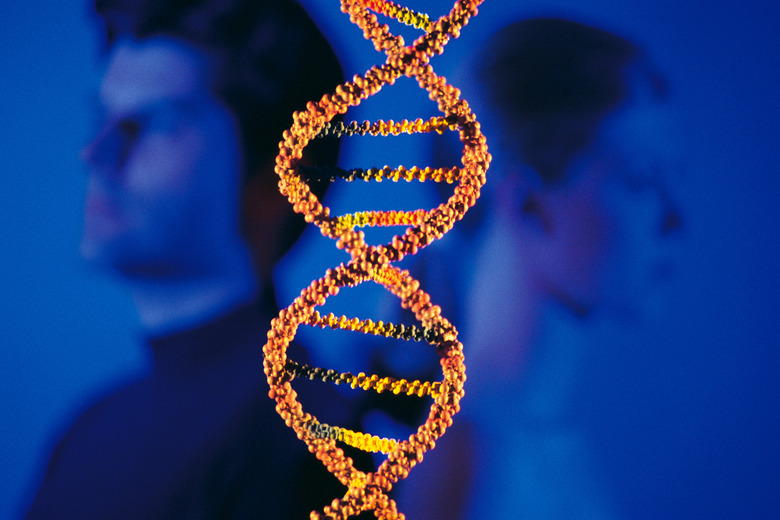What Are Examples Of Homozygous Dominants?
A number of genes come in two variants: dominant and recessive alleles. In diploid life forms – like humans, mice, and many plants – that contain two copies of each gene, the combination of genes present determines whether that organism is heterozygous or homozygous in the expression of that given gene feature. Having one dominant allele and recessive allele each makes the organism heterozygous, but having two of a single allele makes the organism homozygous. If an organism has two copies of the same dominant allele, that organism is known as homozygous dominant – making the expression of that gene certain in the organism, and incredibly likely in its offspring.
Dominant and Recessive Alleles
Dominant and Recessive Alleles
The alleles an offspring inherits can be either dominant or recessive. When an allele is dominant, it means the genetic characteristic it is defining is more likely to occur. For example, having an immunity to poison ivy is a dominant trait in humans. When a gene is recessive, it means it is less likely to occur. For example, color blindness is a recessive trait.
Homozygous Dominant Dimples
Homozygous Dominant Dimples
Let's talk about homozygous dominant genotypes and Luke. Luke's parents are Sally and John. Both Sally and John have dimples, which is a dominant trait. Furthermore, let's assume that both Sally and John have two alleles for this dominant gene, represented as "DD." In this case both Sally and John have a homozygous dominant genotype. Because Luke gets one allele from Sally and one from John, Luke has a 100 percent chance of inheriting a homozygous dominant genotype of "DD," and Luke will be born with dimples.
Homozygous Curly Hair
Homozygous Curly Hair
Curly hair is another dominant trait. In this example, assume that both Sally and John have curly hair, but that Sally has a heterozygous genotype of "Cc." Since Luke gets one allele from Sally and one from John, Luke has a 50 percent chance of having a homozygous dominant genotype of "FF" and a 50 percent change of having a heterozygous dominant genotype of "Ff." In this example, Luke will physically display curly, but he will carry a recessive allele for straight hair.
Homozygous Freckles
Homozygous Freckles
Having freckles is a third example of a dominant trait. In this example, assume that both Sally and John have freckles . Let's also assume that both Sally and John have one dominant allele for freckles and one recessive allele. Sally and John would both have a heterozygous genotype for freckles, which would be represented as "Ff." Does that mean Luke will too? Not necessarily. Because Luke gets one allele from Sally and one from John, Luke has a 25 percent change of have a homozygous dominant genotype of "FF," a heterozygous dominant genotype of "Ff" and a homozygous recessive genotype of "ff."
Cite This Article
MLA
Peters, Rosemary. "What Are Examples Of Homozygous Dominants?" sciencing.com, https://www.sciencing.com/examples-homozygous-dominants-40403/. 20 July 2018.
APA
Peters, Rosemary. (2018, July 20). What Are Examples Of Homozygous Dominants?. sciencing.com. Retrieved from https://www.sciencing.com/examples-homozygous-dominants-40403/
Chicago
Peters, Rosemary. What Are Examples Of Homozygous Dominants? last modified March 24, 2022. https://www.sciencing.com/examples-homozygous-dominants-40403/
